5 Reasons To Grow Your Own Fruit & Veg
Sometimes people ask “Why bother to grow your own fruit and veg? It’s more hassle. Sometimes crops fail. Why not just pop along to the supermarket and get your ready picked, washed, convenient produce?” Well, there are lots of reasons but we’ve freshly picked our top five, just for you…
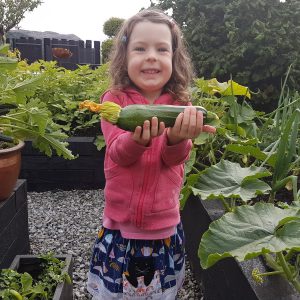
Cracking courgettes!
IT’S CHEAPER
In the current economic climate, more and more people are struggling to make ends meet. Growing your own fruit and veg is a lot cheaper than buying it fresh in the supermarket. Lots of us have our own garden or space for a few pots or there are lots of allotments available which are cheap to rent. Packets of seeds don’t cost much and if you keep your eyes peeled they are often being given away for free!
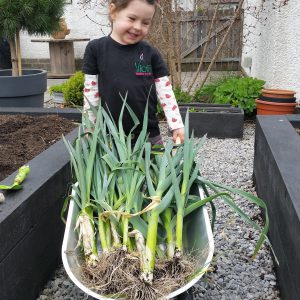
Lovely leeks!
IT’S HEALTHIER
Eating fruit and veg is a great way of keeping healthy. And when we grow it ourselves it’s even healthier as it couldn’t be any fresher. Plus we can grow it organically and know there hasn’t been any yucky pesticides sprayed all over it. Also, gardening is a great form of exercise so there’s another tick in the healthy box!
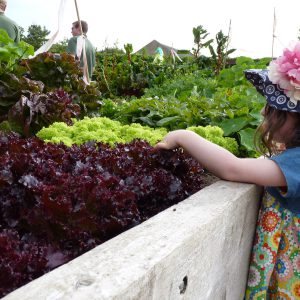
Super salad!
IT’S TASTIER
It’s genuinely true that what we grow ourselves tastes better. The tomatoes that we grow in our own garden couldn’t survive in a supermarket as they have such fine skins and are bursting with juiciness. Fruit and veg starts to deteriorate as soon as it’s picked so the quicker you can get it into your tummies the better. Raspberries don’t even make it to the house in our garden, they are in our tummies within two seconds of being picked!
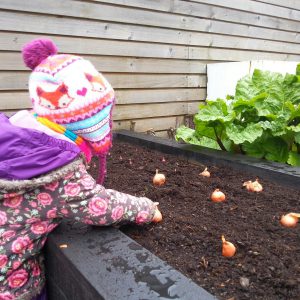
Awesome onions!
IT’S BETTER FOR THE PLANET
By not relying on supermarkets as much, we are reducing carbon emissions by requiring less trucks which have to transport fruit and veg many miles to get from the grower to the supermarket and then to our homes. There’s also no packaging required to get your potatoes or carrots from your veg patch to your house. And no chemicals required to grow them if you grow organically.
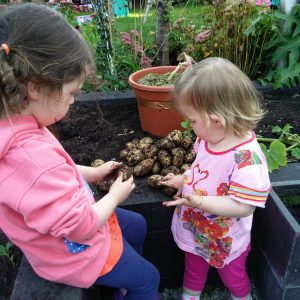
Perfect potatoes!
IT’S FUN!
We all know that being outdoors and getting dirty is a lot of fun! Doctor’s are even prescribing gardening as therapy these days. So get outdoors, dig over a section of your garden and see how much fun it is to see fruit and veg growing from teeny tiny seeds which eventually are big enough for us to eat. Amazing!

Mucky fun!
So why not choose at least one new vegetable or fruit to try growing this year and see what you think…
Lulu & Tilda xx
Save The Snail!
Most gardener’s don’t like snails but I have a confession to make. I, Lulu Ann Burt love them! There, I said it! ‘Nails (as I call them) are funny creatures and I love hunting for them in the garden. I say Save The Snail! Trouble is they love eating the scrummy plants in the garden as much as we do! It’s important to try and help look after our prized plants so here are a few of my top tips on being snail-savvy in the garden as well as a brilliant project to make your own snail which won’t eat any of your prized hostas!
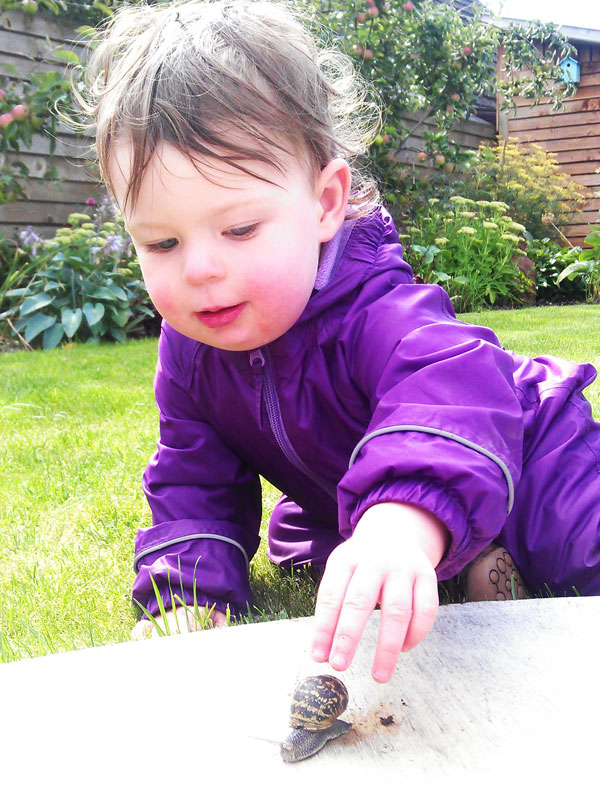
Me and my friend the ‘Nail
As I love snails very much and as M&D feel very strongly about being organic we don’t recommend putting down slug and snail pellets in the garden. These can be eaten by other animals or even children and can be very dangerous (as well as not very nice way to treat my friend the snail!) Here are some better ways to deal with them…
Ooh ooh, ouch!
Snails hate to crawl over anything scratchy so putting a ring of something like crushed egg shells or grit around the plants they most like to eat helps deter them. Watch out for any foliage that falls into the ring as that can be used as a bridge by the canny creatures.
Ring a ring of hostas
If you have your prized plants in pots which the snails are attacking, try putting a copper ring around the pot – the snails won’t want to crawl over it and your plants stay safe.
Snail hunting!
This is my favourite method – snail hunting! Swap your spade for a torch and get out at dusk and collect the pests yourselves. You will be amazed at how many of the wee beasties you will find!
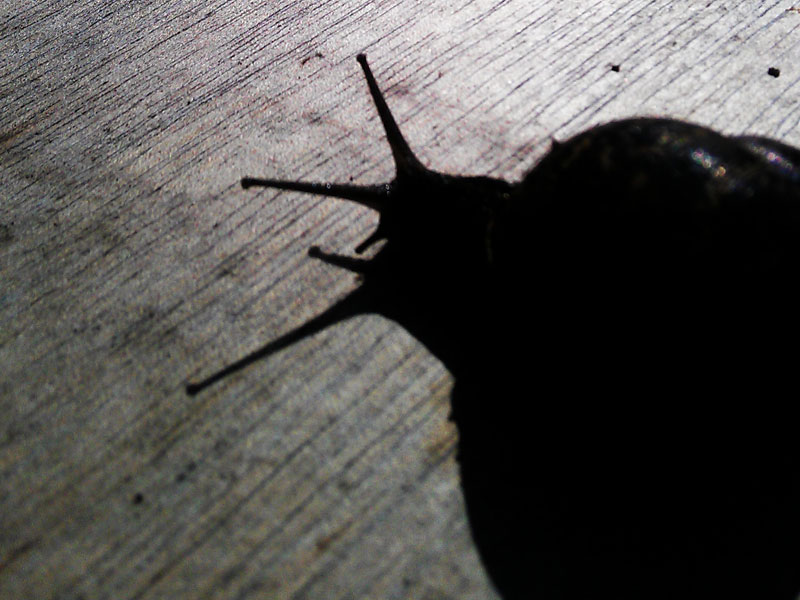
Head out and do some snail hunting at dusk
Pull on the (fox)gloves
Sometimes you need to box clever and choose plants which snails wouldn’t have at their beastly banquet. Choose plants with scented leaves such as alliums, fennel and rosemary, plants with textured leaves such as lambs ears and lavender or plants such as ferns, foxgloves and camellias. All beautiful but relatively safe from unwanted intruders.
Cheers
A method well known in the gardening world is setting beer traps for snails. If your grown-up can spare some of their well earned bottle at the end of a day’s hard graft in the garden, ask them to sink a rinsed out empty can with some beer in it, into the ground. Snails are attracted to the smell and fall in the can and can’t get back out making it easy for you to dispose of them.
Nematodes
Some gardeners turn to a biological solution in the fight against snails. A naturally occurring nematode (a tiny worm) can be introduced into the gardener by adding it to a watering can. They contain bacteria which attacks and kills snails. It lasts for about six weeks and doesn’t affect anything else in the garden. Despite the name no toads are used in this method!
Nema-toads
As you can see there are lots of ways of tackling snails but I think one of the best ways is to attract beneficial wildlife that feasts on snails. If you have space for a wildlife pond you can attract frogs and toads which love a slug supper. Creating a log pile or leaving a corner of old leaves may mean a hedgehog sets up home in your garden and it will repay you by eating up these foe. Or make a bug hotel or encourage birds into the garden to help you in your efforts.
So, now you know how to keep snails out of your garden why not bring one into the house instead with this wonderful craft idea:
Make A Paper Plate Snail
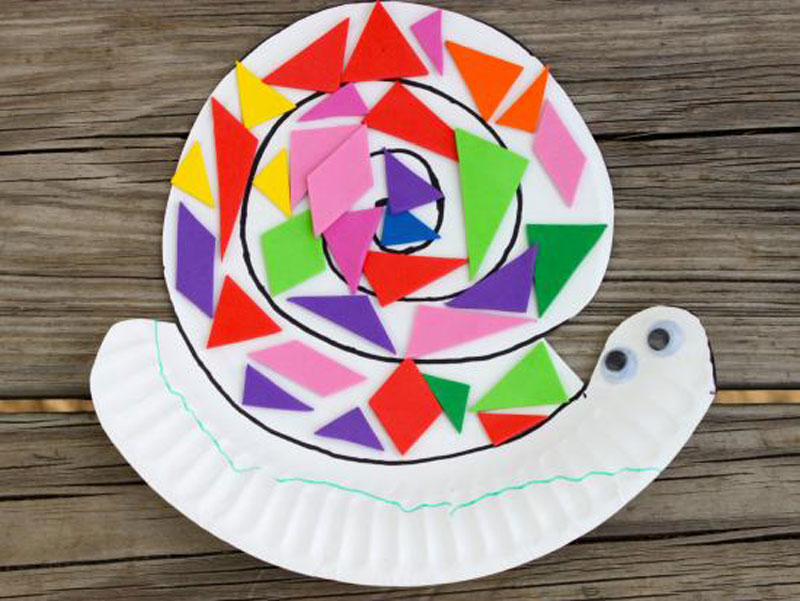
Make A Paper Plate Snail (Image courtesy of Kiwi Co)
You will need:
- A paper plate
- A marker pen
- Scissors
- Coloured paper or stickers
- Glue
- Paint
- Googly eyes (optional)
- Pipe cleaners (optional)
To make:
1. Draw this shape on the paper plate:
2. Cut off the top part of your paper plate to make the snail shape:
3. Use your coloured paper or stickers to stick shapes around the shell. Make your snail as funky and colourful as you wish. I liked learning about the different colours and shapes we were using as we did it
4. Finally paint the body, stick on (or draw on) your eyes and if you wish, add some pipe cleaners to make the feelers. And there you have it – a paper plate snail! All the fun but your hostas will stay safe
You can make themed snails too if you wish. Grandma and I made a lovely festive snail for Christmas!
Remember to email me photos of your snail creations or if there are other garden animals you would like to learn about and see a craft project on then let me know!
For more tips on garden pests visit our blog:
Vialii Guide To Top Garden Pests And Diseases
Lulu
Thank you to Kiwicrate for the inspiration for this craft project
